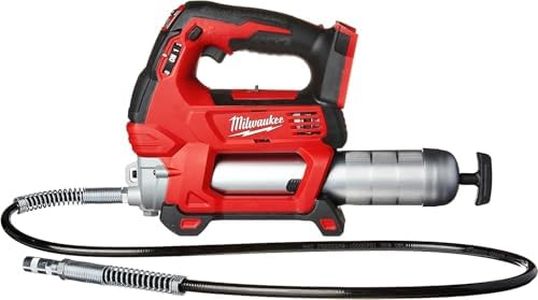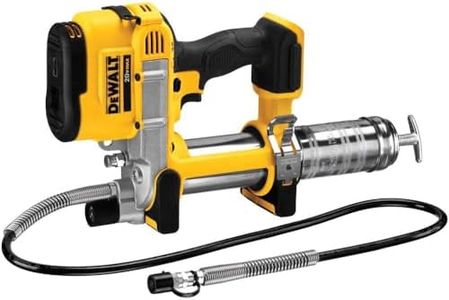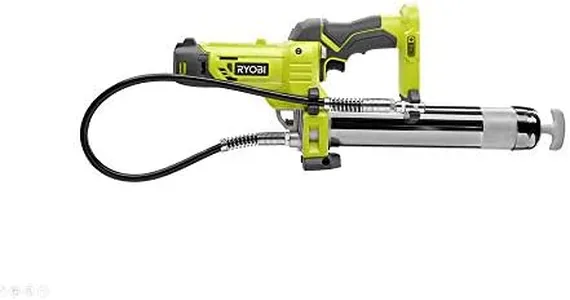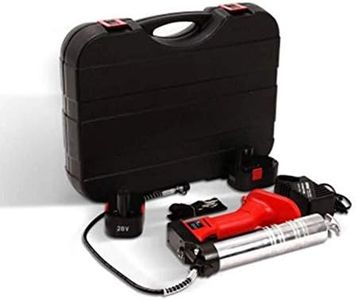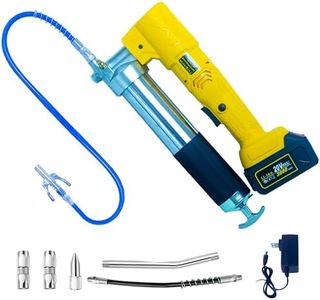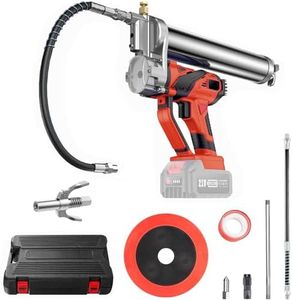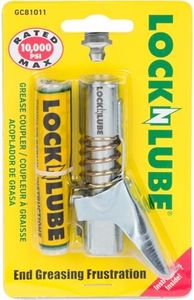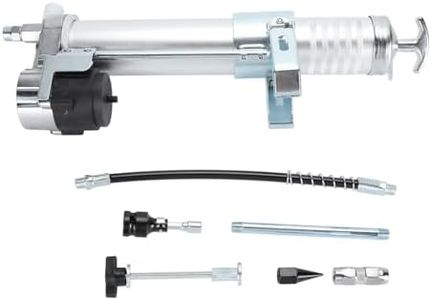We Use CookiesWe use cookies to enhance the security, performance,
functionality and for analytical and promotional activities. By continuing to browse this site you
are agreeing to our privacy policy
10 Best Cordless Grease Gun
From leading brands and best sellers available on the web.By clicking on a link to a third party's website, log data is shared with that third party.
Buying Guide for the Best Cordless Grease Gun
Choosing the right cordless grease gun can make regular lubrication tasks quicker and easier, especially for vehicles, heavy machinery, or equipment maintenance. When picking a cordless grease gun, you should consider the type of jobs you'll be handling, how frequently you'll use it, and whether portability and ease of use are important. Understanding the key features will help you focus on what matters most for your needs.Voltage (Battery Power)Voltage indicates the power output of the grease gun's battery. Higher voltage typically means more power, which can result in faster grease delivery or allow for thicker greases to be pumped more easily. Basic models often use lower voltage batteries (around 12V), which are lighter and suitable for occasional, lighter jobs. Mid-range options (around 18V) offer a balance between power and weight, fitting most general tasks. Heavy-duty units above 20V are designed for frequent, demanding use with tough equipment. Choose based on how strenuous your greasing tasks will be and whether power or weight matters more.
Grease Delivery Pressure (PSI)This refers to the maximum pressure the gun can produce when applying grease, measured in pounds per square inch (PSI). Lower pressures (3,000-5,000 PSI) are suitable for standard machinery. Medium levels (up to 8,000 PSI) handle tougher fittings and moderate blockages. The highest pressures (10,000 PSI or more) are best for heavy machinery or situations where fittings are particularly hard to lubricate. Think about the stiffness of your grease, the equipment you maintain, and whether you often deal with clogged fittings.
Grease Flow RateFlow rate tells you how much grease the gun can dispense in a set period, often measured in ounces per minute. Low flow rates are fine for occasional use and precision work. Medium flow rates work for regular maintenance on cars or light trucks. High flow rates are ideal when you need to lubricate many fittings quickly or deal with large equipment. If you have a few, delicate jobs, prioritize control over speed; if you're lubricating many machines, opt for a higher flow rate to save time.
Battery Life and Charging TimeBattery life determines how long you can use the grease gun between charges, while charging time dictates how quickly you can get back to work. Short battery life suits infrequent, short jobs, while long battery life is crucial for extended sessions or work sites without easy access to power. Fast-charging batteries are handy if you need to minimize downtime. Consider your work pace—if you plan to grease several machines in one go, look for longer-lasting batteries.
Grease Cartridge CapacityThis feature tells you how much grease the gun can hold, usually measured by the cartridge size in ounces. Smaller capacities are lighter and easier to handle, making them good for short or precise jobs. Larger capacities reduce the need to reload, which is useful for frequent or large-scale tasks. Base your choice on how much greasing you need to do in one session and whether you prefer a lighter tool or fewer interruptions.
Hose Length and FlexibilityThe length and flexibility of the grease gun's hose impact how easily you can reach awkward or tight fittings. Short hoses are fine if all fittings are easily accessible. Medium hoses provide a good balance for most users, allowing for flexibility without getting in the way. Long, flexible hoses are essential for reaching deep or hidden fittings but can be more cumbersome. Consider the accessibility of your lubrication points—hard-to-reach places mean you should prioritize a longer, more flexible hose.
Weight and ErgonomicsThe overall weight and comfort of the grease gun determine how easy it is to handle, especially during long use. Lighter models reduce fatigue, making them ideal for quick or overhead jobs. Heavier tools may have stronger batteries or more capacity, which is great for big jobs but can be tiring to use. Look for comfortable grips and balanced designs. If you need to use the gun for extended periods or in awkward positions, a lighter, ergonomic model is preferable.
